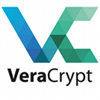/*
Derived from source code of TrueCrypt 7.1a, which is
Copyright (c) 2008-2012 TrueCrypt Developers Association and which is governed
by the TrueCrypt License 3.0.
Modifications and additions to the original source code (contained in this file)
and all other portions of this file are Copyright (c) 2013-2017 IDRIX
and are governed by the Apache License 2.0 the full text of which is
contained in the file License.txt included in VeraCrypt binary and source
code distribution packages.
*/
#include "Platform/SystemException.h"
#include "Platform/SystemInfo.h"
#include <sys/utsname.h>
namespace VeraCrypt
{
wstring SystemInfo::GetPlatformName ()
{
#ifdef TC_LINUX
return L"Linux";
#elif defined (TC_MACOSX)
return L"Mac OS X";
#elif defined (TC_FREEBSD)
return L"FreeBSD";
#elif defined (TC_OPENBSD)
return L"OpenBSD";
#elif defined (TC_SOLARIS)
return L"Solaris";
#else
# error GetPlatformName() undefined
#endif
}
vector <int> SystemInfo::GetVersion ()
{
struct utsname unameData;
throw_sys_if (uname (&unameData) == -1);
vector <string> versionStrings = StringConverter::Split (unameData.release, ".");
vector <int> version;
for (size_t i = 0; i < versionStrings.size(); ++i)
{
string s = versionStrings[i];
size_t p = s.find_first_not_of ("0123456789");
if (p != string::npos)
s = s.substr (0, p);
if (s.empty())
break;
version.push_back (StringConverter::ToUInt32 (s));
}
return version;
}
bool SystemInfo::IsVersionAtLeast (int versionNumber1, int versionNumber2, int versionNumber3)
{
vector <int> osVersionNumbers = GetVersion();
if (osVersionNumbers.size() < 2)
throw ParameterIncorrect (SRC_POS);
if (osVersionNumbers.size() < 3)
osVersionNumbers[2] = 0;
return (osVersionNumbers[0] * 10000000 + osVersionNumbers[1] * 10000 + osVersionNumbers[2]) >=
(versionNumber1 * 10000000 + versionNumber2 * 10000 + versionNumber3);
}
}
